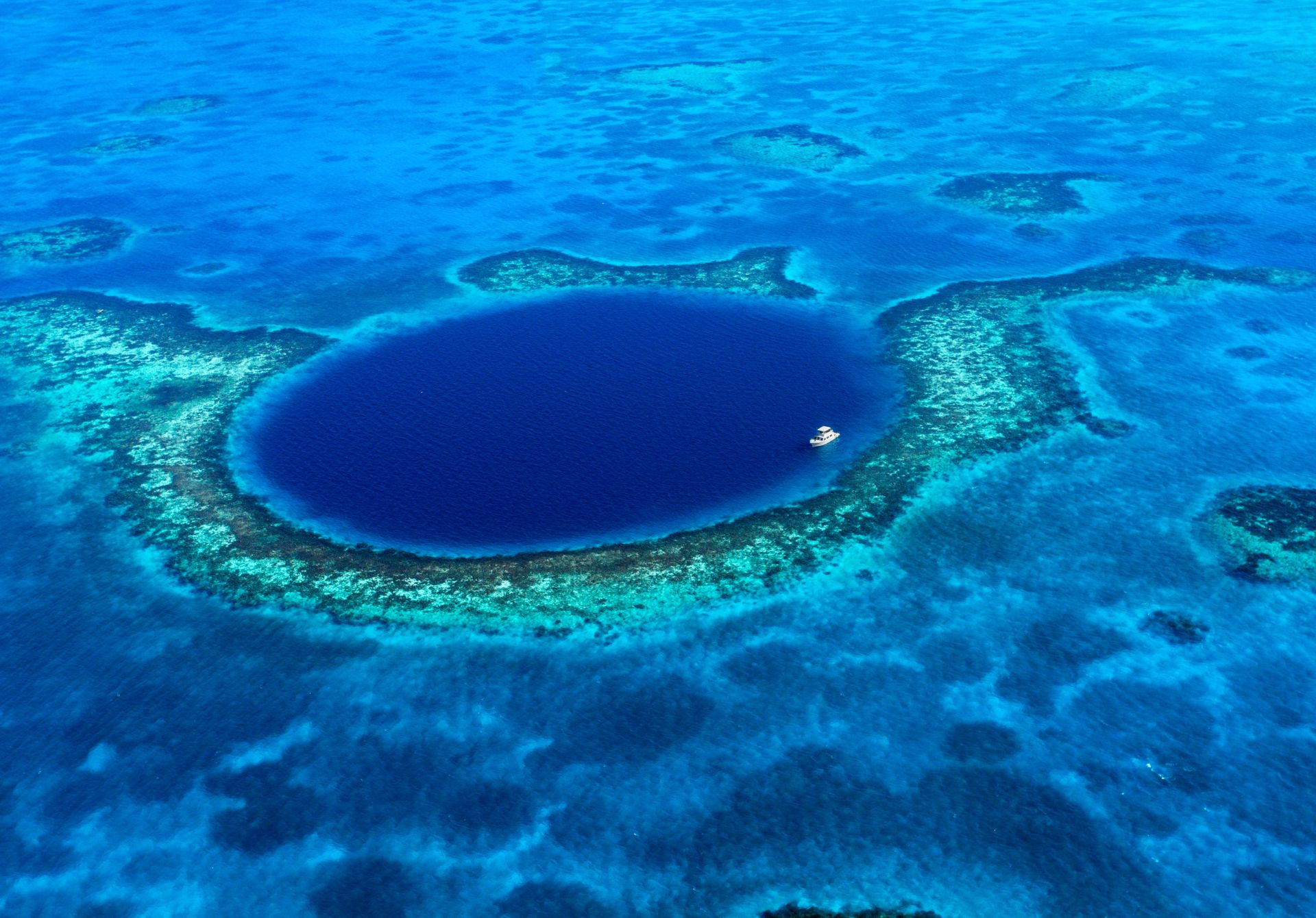The Great Blue Hole in Belize is one of the most mesmerizing and iconic natural landmarks in the world. Situated off the coast of Belize, this giant marine sinkhole is part of the larger Belize Barrier Reef Reserve System, a UNESCO World Heritage site. Divers and adventurers from all over the globe flock to this incredible location to witness its striking beauty and explore its underwater depths.
What is the Great Blue Hole?
The Great Blue Hole is a giant circular sinkhole measuring over 300 meters (984 feet) across and approximately 125 meters (410 feet) deep. Located near the center of Lighthouse Reef, a small atoll, this geological marvel formed over thousands of years due to the collapse of a limestone cave system during the last Ice Age. Over time, as the sea levels rose, the cave system flooded, leaving behind the unique underwater feature we see today.
History of the Great Blue Hole
The Great Blue Hole has intrigued scientists and geologists since it was first explored by the legendary marine biologist Jacques Cousteau in 1971. Cousteau, who declared it one of the top 10 diving spots in the world, helped put this natural wonder on the global map. His team’s investigation revealed massive stalactites and stalagmites deep within the hole, evidence that the area was once a dry cave system before being submerged by the ocean.
Exploring the Depths
For scuba divers, the Great Blue Hole represents an irresistible challenge and adventure. The dive begins with crystal-clear, shallow waters, gradually giving way to deeper, darker regions as divers descend. At approximately 40 meters (130 feet) below the surface, divers encounter stunning stalactites hanging from the ceiling of the cave system. The aquatic life includes species like Caribbean reef sharks, nurse sharks, and occasionally hammerhead sharks.
Unique Marine Ecosystem
The Great Blue Hole hosts a unique and diverse marine ecosystem. While the coral at the rim of the hole thrives, the deeper sections of the sinkhole are largely devoid of marine life due to the absence of light and oxygen. However, the sinkhole’s walls and surrounding reefs support a wide variety of fish, including groupers, angelfish, and parrotfish. The area around the Great Blue Hole is also home to vibrant coral formations that make it a paradise for snorkelers and divers alike.
Environmental Significance
The Great Blue Hole is not just a geological wonder but also a crucial part of Belize’s marine ecosystem. As part of the Belize Barrier Reef Reserve, it plays an important role in marine conservation efforts. The Belize government has worked to protect the reef system and ensure that the Great Blue Hole remains an ecological treasure for future generations. In recent years, there have been increased efforts to monitor the environmental impact of human activity, particularly from tourism, to preserve the area’s natural beauty and biodiversity.
Threats and Conservation Efforts
Climate change and ocean acidification pose significant threats to the Great Blue Hole and the surrounding coral reefs. Warmer ocean temperatures can lead to coral bleaching, which affects the health and sustainability of the reef. Belize has taken steps to protect its marine ecosystems, including banning offshore oil drilling and promoting sustainable tourism practices. These conservation efforts are vital to preserving the beauty and ecological importance of the Great Blue Hole.
How to Visit the Great Blue Hole
The Great Blue Hole is accessible by boat, with most tours departing from the coastal city of Belize City or nearby islands like Ambergris Caye. Tours often include snorkeling or diving expeditions, and the dive itself is recommended for experienced divers due to its depth. Snorkelers can also enjoy the surrounding shallow reefs, which offer a breathtaking view of vibrant marine life and coral formations.
Best Time to Visit
The best time to visit the Great Blue Hole is during the dry season, which runs from November to April. During this period, weather conditions are ideal for diving and snorkeling, with calm waters and excellent visibility. It’s important to book tours in advance, as this natural wonder attracts a large number of visitors during peak season.
The Great Blue Hole is a true marvel of nature that continues to captivate explorers, scientists, and divers alike. Its rich history, unique geological formation, and vibrant marine ecosystem make it one of the most remarkable dive sites in the world. While the Great Blue Hole is a popular tourist destination, it also represents the delicate balance of nature, underscoring the importance of conservation efforts to protect this extraordinary natural wonder for future generations.

